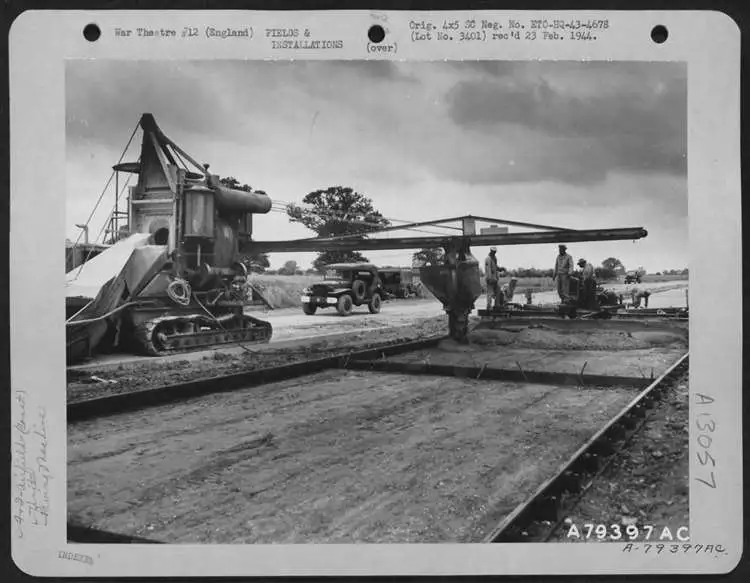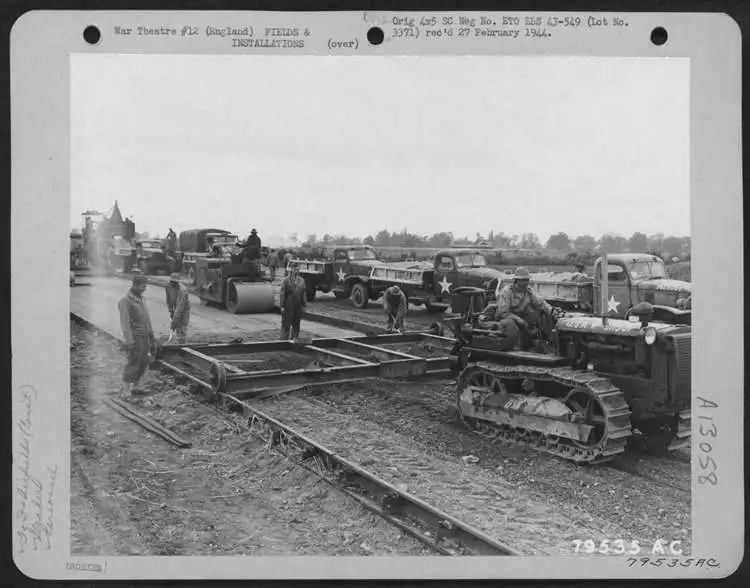
Engineers.
The construction of new airfields was a massive undertaking, requiring significant resources and manpower. The Air Ministry’s Works Directorate, responsible for the construction of RAF infrastructure, worked tirelessly to identify suitable sites, design and build new airfields, and recruit the necessary workforce.

We have collected together some pages of information below that we’re sure you’ll find interesting and educational.
If you have any more information to add here please let us know by going to ‘Contact Us’


WW2 Airfield Construction: The Story of RAF Eye
In the years leading up to World War II, the RAF had been steadily expanding its operations, but the existing airfields were insufficient to meet the growing demands of the service. The Air Ministry, responsible for the RAF’s infrastructure, identified a need for new airfields that could accommodate the latest generation of aircraft, including the Avro Lancaster and the Handley Page Halifax.
The Construction of RAF Eye
In 1940, the British government acquired a large area of farmland near the village of Eye, Suffolk, to build a new bomber airfield. The site was chosen for its proximity to the coast, which would allow aircraft to easily access the continent, and its relatively flat terrain, which made it ideal for runway construction.
The construction of RAF Eye was a complex process, involving thousands of workers and engineers from the Air Ministry’s Works Directorate. The airfield was designed to accommodate the RAF’s growing fleet of heavy bombers, including the Avro Lancaster and the Handley Page Halifax.
The construction process was rapid, with work commencing in the summer of 1940 and the airfield becoming operational just 12 months later. The airfield’s design was typical of the period, with three concrete runways, a perimeter track, and a series of dispersal points for aircraft. The airfield’s infrastructure also included a range of support buildings, including hangars, barracks, and administrative offices.
The Challenges of Construction
The construction of RAF Eye was not without its challenges. The airfield was built on a site with poor drainage, which required the installation of a complex system of drains and culverts to prevent flooding. The workforce also faced difficulties in sourcing materials, particularly concrete, which was in short supply due to the demands of other wartime construction projects.
The construction process was also hampered by the harsh winter weather of 1940-41, which caused significant delays and disruptions to the work. Despite these challenges, the workforce persevered, and the airfield was completed on schedule.
The Role of RAF Eye in the War Effort
RAF Eye played a significant role in the war effort, serving as a base for the RAF’s Bomber Command and hosting a range of squadrons, including the famous 490th Bombardment Group of the United States Army Air Forces. The airfield was also used as a staging post for aircraft en route to other parts of the country or overseas.
The airfield’s proximity to the coast made it an ideal location for anti-submarine patrols, and RAF Eye was home to several squadrons of Coastal Command aircraft. The airfield also played a key role in the D-Day landings, with aircraft from RAF Eye providing air support to the Allied forces.
The Squadrons of RAF Eye
RAF Eye was home to a number of squadrons during the war, including:
No. 90 Squadron RAF, which operated the Avro Lancaster and played a key role in the strategic bombing campaign against Germany.
No. 214 Squadron RAF, which operated the Handley Page Halifax and was involved in a range of operations, including bombing, reconnaissance, and anti-submarine patrols.
The 490th Bombardment Group of the United States Army Air Forces, which operated the Boeing B-17 Flying Fortress and played a key role in the Allied bombing campaign against Germany.
Today, the former RAF Eye airfield is a poignant reminder of the sacrifices
